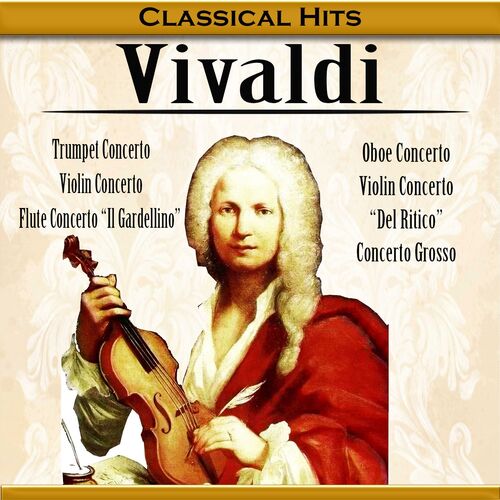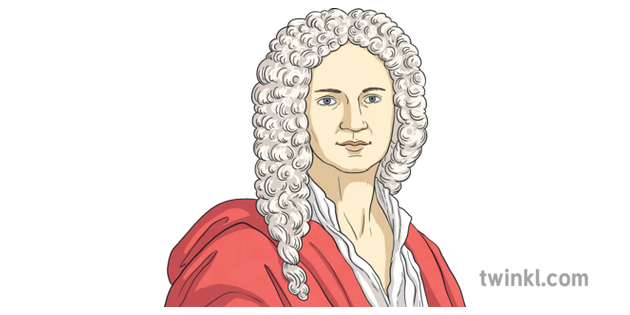Vivaldi, Venice and violins: all three are celebrated in Vivaldi’s Ring of Mystery, a compelling mystery story about an orphan girl in the early 1700s who is in search of her roots. A central clue to the mystery is a missing Stradivarius violin that the Duke of Cremona has brought to Vivaldi’s school of the Pieta in the hopes of finding his. Vivaldi’s most famous surviving letter, the one in which, four years before his death in 1741, the composer mounts a defence of his artistic and moral reputation, is viewable only on the rare occasions when it is held in auction rooms prior to sale.
Subscribe and turn on notifications to be alerted of our uploads!Facebook / 1991 Moldav. Classical Guitar Music of Vivaldi (Concert Masterworks) Paperback – February 1, 2000 by Antonio Vivaldi (Author), Joseph Harris (Author) 3.9 out of 5 stars 7 ratings.
Antonio Vivaldi - Four SeasonsBudapest StringsBela Banfalvi, ConductorYou can get the exact album I have here on Amazon: (affiliate).H.

Our editors will review what you’ve submitted and determine whether to revise the article.
 Join Britannica's Publishing Partner Program and our community of experts to gain a global audience for your work!
Join Britannica's Publishing Partner Program and our community of experts to gain a global audience for your work! 
Antonio Vivaldi, in full Antonio Lucio Vivaldi, (born March 4, 1678, Venice, Republic of Venice [Italy]—died July 28, 1741, Vienna, Austria), Italian composer and violinist who left a decisive mark on the form of the concerto and the style of late Baroque instrumental music.
Life
Vivaldi’s main teacher was probably his father, Giovanni Battista, who in 1685 was admitted as a violinist to the orchestra of the San Marco Basilica in Venice. Antonio, the eldest child, trained for the priesthood and was ordained in 1703. His distinctive reddish hair would later earn him the soubriquetIl Prete Rosso (“The Red Priest”). He made his first known public appearance playing alongside his father in the basilica as a “supernumerary” violinist in 1696. He became an excellent violinist, and in 1703 he was appointed violin master at the Ospedale della Pietà, a home for foundlings. The Pietà specialized in the musical training of its female wards, and those with musical aptitude were assigned to its excellent choir and orchestra, whose much-praised performances assisted the institution’s quest for donations and legacies. Vivaldi had dealings with the Pietà for most of his career: as violin master (1703–09; 1711–15), director of instrumental music (1716–17; 1735–38), and paid external supplier of compositions (1723–29; 1739–40).
Soon after his ordination as a priest, Vivaldi gave up celebrating mass because of a chronic ailment that is believed to have been bronchial asthma. Despite this circumstance, he took his status as a secular priest seriously and even earned the reputation of a religious bigot.
Vivaldi’s earliest musical compositions date from his first years at the Pietà. Printed collections of his trio sonatas and violin sonatas respectively appeared in 1705 and 1709, and in 1711 his first and most influential set of concerti for violin and string orchestra (Opus 3, L’estro armonico) was published by the Amsterdam music-publishing firm of Estienne Roger. In the years up to 1719, Roger published three more collections of his concerti (opuses 4, 6, and 7) and one collection of sonatas (Opus 5).
Vivaldi Classical Or Baroque
Vivaldi made his debut as a composer of sacred vocal music in 1713, when the Pietà’s choirmaster left his post and the institution had to turn to Vivaldi and other composers for new compositions. He achieved great success with his sacred vocal music, for which he later received commissions from other institutions. Another new field of endeavour for him opened in 1713 when his first opera, Ottone in villa, was produced in Vicenza. Returning to Venice, Vivaldi immediately plunged into operatic activity in the twin roles of composer and impresario. From 1718 to 1720 he worked in Mantua as director of secular music for that city’s governor, Prince Philip of Hesse-Darmstadt. This was the only full-time post Vivaldi ever held; he seems to have preferred life as a freelance composer for the flexibility and entrepreneurial opportunities it offered. Vivaldi’s major compositions in Mantua were operas, though he also composed cantatas and instrumental works.
The 1720s were the zenith of Vivaldi’s career. Based once more in Venice, but frequently traveling elsewhere, he supplied instrumental music to patrons and customers throughout Europe. Between 1725 and 1729 he entrusted five new collections of concerti (opuses 8–12) to Roger’s publisher successor, Michel-Charles Le Cène. After 1729 Vivaldi stopped publishing his works, finding it more profitable to sell them in manuscript to individual purchasers. During this decade he also received numerous commissions for operas and resumed his activity as an impresario in Venice and other Italian cities.
In 1726 the contralto Anna Girò sang for the first time in a Vivaldi opera. Born in Mantua about 1711, she had gone to Venice to further her career as a singer. Her voice was not strong, but she was attractive and acted well. She became part of Vivaldi’s entourage and the indispensable prima donna of his subsequent operas, causing gossip to circulate that she was Vivaldi’s mistress. After Vivaldi’s death she continued to perform successfully in opera until quitting the stage in 1748 to marry a nobleman.
In the 1730s Vivaldi’s career gradually declined. The French traveler Charles de Brosses reported in 1739 with regret that his music was no longer fashionable. Vivaldi’s impresarial forays became increasingly marked by failure. In 1740 he traveled to Vienna, but he fell ill and did not live to attend the production there of his opera L’oracolo in Messenia in 1742. The simplicity of his funeral on July 28, 1741, suggests that he died in considerable poverty.
After Vivaldi’s death, his huge collection of musical manuscripts, consisting mainly of autograph scores of his own works, was bound into 27 large volumes. These were acquired first by the Venetian bibliophile Jacopo Soranzo and later by Count Giacomo Durazzo, Christoph Willibald Gluck’s patron. Rediscovered in the 1920s, these manuscripts today form part of the Foà and Giordano collections of the National Library in Turin.
- born
- March 4, 1678
Venice, Italy
- died
- July 28, 1741 (aged 63)
Vienna, Austria
- notable works
- movement / style

The Four Seasons, composed in 1723, is one of Baroque legend Vivaldi's most famous works for violin. Here's a very special performance of one of the movements, from one of Europe's top chamber orchestras.
We usually associate Vivaldi with Venice and the Italian sun. However, an orchestra has taken 'Winter' from The Four Seasons and turned it into something quite different.
The Arctic Philharmonic Chamber Orchestra decided to perform this masterpiece in one of the most northern places on Earth, Telegrafbukta, Tromsø, deep above the Arctic Circle in Norway. The orchestra's Artistic Director and star violinist Henning Kraggerud performs the solo passages in a separate shot, filmed in the snow, ice and magical arctic light.
Classical Vivaldi Music For Kids
There's much more from the Arctic Philharmonic on their YouTube channel (the sound engineer for this incredible video was Asle Karstad, the video creator and editor was Håvard Bilsbak).
More about these incredible concertos...

Vivaldi wrote so many concertos that, much like Haydn and his symphonies, he tended to resort to nicknames rather than numbers, for ease. Each concerto of his Four Seasons corresponds to a different season – so it's easy to guess how he nicknamed this particular work.
The music is accompanied by beautiful Italian sonnets, possibly written by Vivaldi himself after he was inspired by painter Marco Ricci's paintings of the seasons. It's even customary in some concerts that a narrator reads the poems before the performance, to bring the musical story to life.
Listen out for the texture of the music representing winter, with the high-pitched plucking from the strings sounding a bit like cold and icy rain. There are also more descriptive labels dotted throughout the movements: the second movement of Spring is part-labelled 'the barking dog', while one section of Autumn says 'the drunks have fallen asleep'. You might even hear a passionate thunderstorm in Summer, with the balmy music representing a warm August evening.
